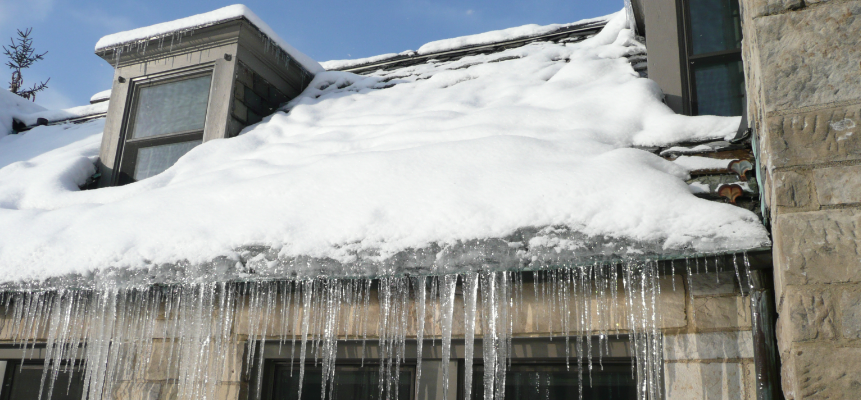
Your roof is one of the single most-important parts of your entire house, as it has the job of keeping the weather out of your home year after year. A healthy roof can do wonders for the condition and longevity of your home, while a faulty roof can be an expensive and time-consuming problem to fix.
If you live in a cold part of the world, you will need to worry about the possibility of ice dams forming on your roof in the winter. What is an ice dam? Simply put, an ice dam is an accumulate of ice near the edges of your roof. It is natural for ice to form during the course of a cold winter, and these large chunks are commonly found on many different kinds of residential roofs. However, while they might not look like a big deal from street level, they can actually be extremely harmful if ignored.
A Pooling Problem
The problem with allowing ice dams to exist on your roof is the possibility of water backing up behind those dams during warm parts of the day. For instance, if the temperatures are well below freezing overnight – but warm into the low 40’s during the day – there will be water on your roof that can pile up behind an ice dam. When that happen, the water may work its way back up under your shingles, doing damage to the roof below.
So how can you protect your home from this quiet but serious problem? Surprisingly, one of the best things you can do is to keep your roof as cold as possible in the winter. The water that develops on your roof is often the due to a warm attic, which can head the roof up to a temperature above that of the outside air. This kind of warming from the inside will accelerate the melting of ice and snow on your roof, and you will suddenly have a pool of water that can cause trouble for your structure.
Proper Insulation is Key
To avoid heating your attic during the winter, make sure your insulation is in good shape heading in to the cold season. Most building codes call for at least a foot of insulation in an attic, so check with your local regulations to make sure you are in compliance. By checking on the thickness of your insulation, you can then add more if necessary to keep your attic and roof colder in the winter.
A Manual Fix
If you aren’t able to keep your roof as cold as necessary, or if there is water pooling due to the air warming during the daytime hours, you may need to manually pull snow off of your roof from time to time. Of course, this can be a dangerous job, so be sure to take all necessary precautions, and look into the possibility of purchasing a snow rake which can allow you to do the job while standing on the ground (for a single story home). Never pull snow down toward you while standing on a ladder, and the snow could potentially knock you down.
Ice dams are a serious problem in cold parts of the world, but there are steps that can be taken to prevent them from doing damage to your roof. Plan ahead for this potential issue and you should be able to avoid any costly repairs down the line.










